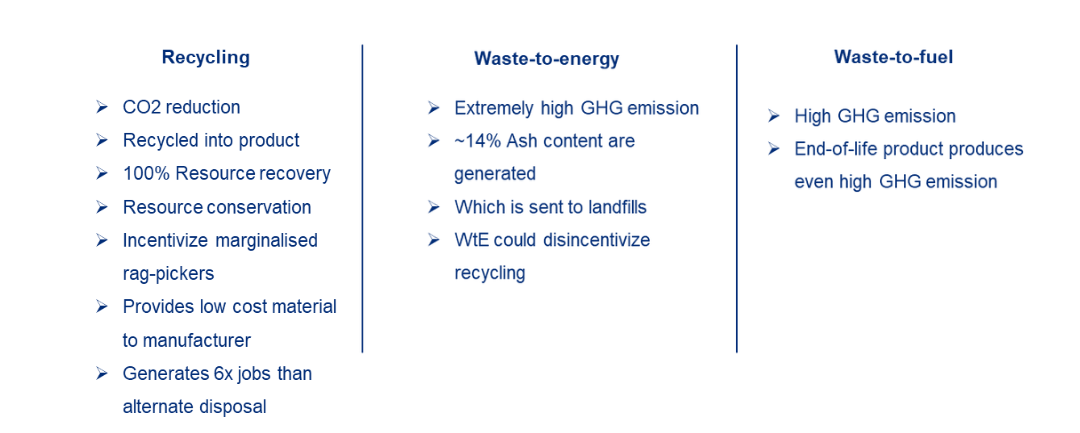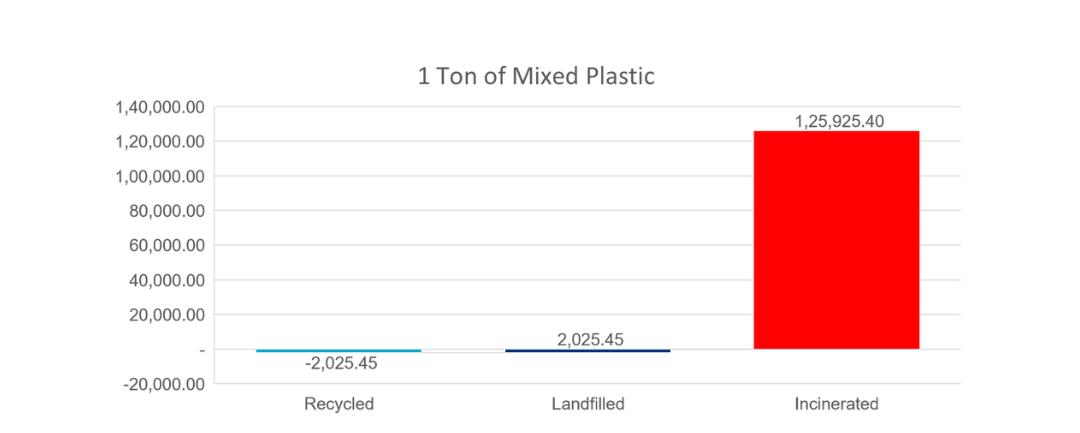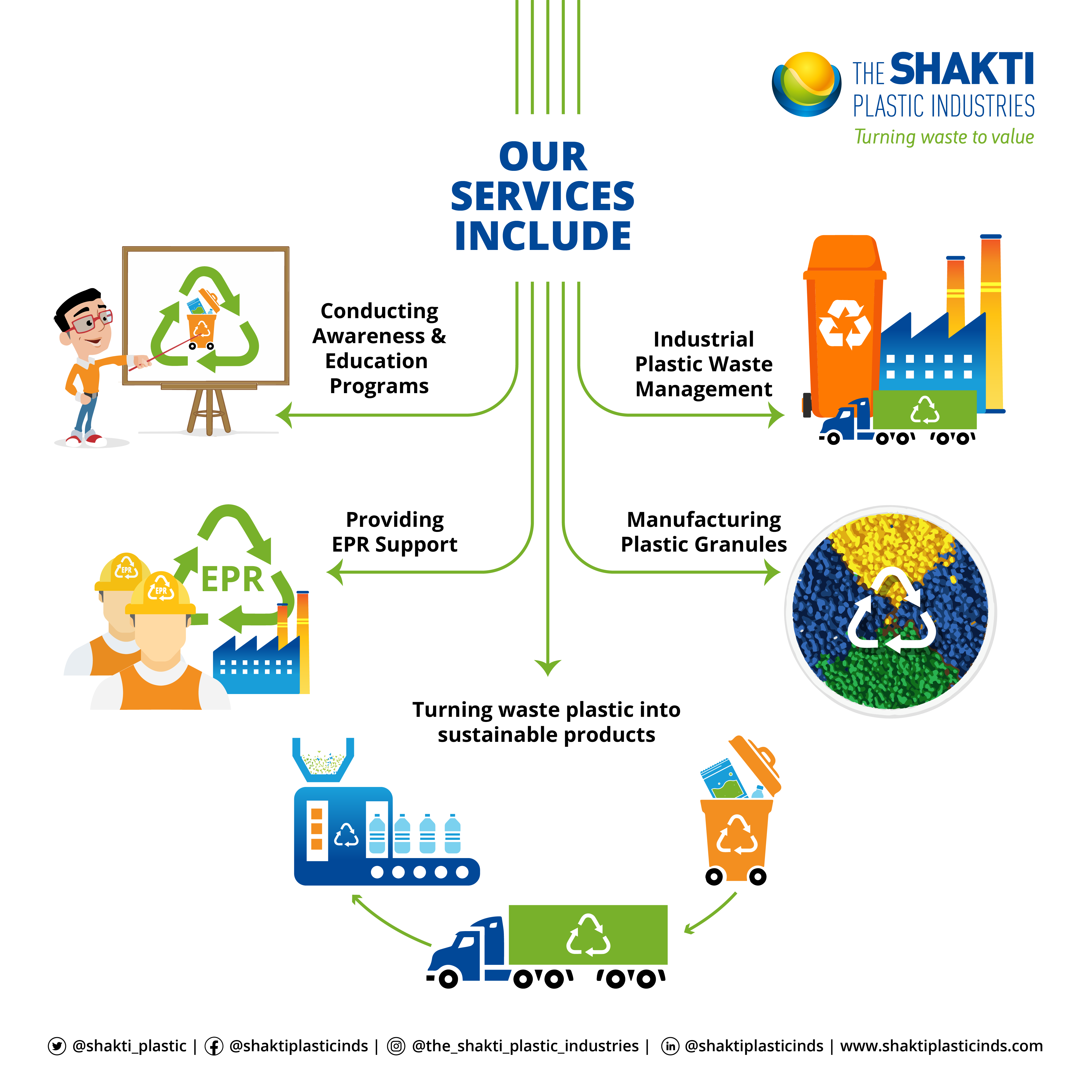Table Of Content:
- Recyclability of Post-consumer Multi-Layer Plastics Waste
- Post-Consumer Waste Flow
- Benefits to PIBOs by Recycling Post-consumer MLP waste
- What happens to your Multi-Layered Plastic waste if not recycled?
- Benefits to PIBOs
- What happens to your Multi-Layered Plastic waste if not recycled?
- Under the Plastic Recycling Rules in India, the government has put focus on recycling
- Process of Recycling MLP waste
- Categories of Plastic
- What is Post-consumer Recycled (PCR)
Post-consumer Multi-Layer Plastic Recycling under Extended Producers Responsibility (EPR)
Why recycling is important for Producers, Importer and Brand Owners?
MLP Stands for Multi-Layered Plastic Waste. It is a type of plastic most commonly used for the packaging of food items such as chips, biscuits, chocolates, and other snacks. Mostly, MLP packets have two sheets of plastic enclosing a layer of aluminum, but technically MLP can be any material that has at least one layer of plastic.
Recyclability of Multi-layer Plastic Waste
It is a wide perception that Multi-layer Plastic Waste is not recyclable, which is not true. Post-consumer MLPs are 100% Recyclable. The Shakti Plastic Industries has developed the unique patented process over the decades to process this contaminated post-consumer MLP plastic waste into high-quality granules. Which are further used to manufacture various eco-friendly and sustainable products.
Post-Consumer Waste Flow
Plastic waste is sourced from ULBs, households, scrap traders, societies, etc. and sent to the nearest MRF where the waste is segregated grade-wise and quality-wise further to segregation, recyclable plastic waste is sent to one of the recycling facilities where it is washed, processed and converted into high-quality granules. And non-recyclables are sent to waste for energy recovery or pyrolysis.
Benefits to PIBOs by Recycling Post-consumer MLP waste
- PIBOs can achieve their Extended Producers Responsibilities
- Recycling plastics gives new life to your Post-consumer Plastic Waste
- Helps in achieving plastic neutrality and also
- Generate 6x employment than incineration
- Compliance with recycling post-consumer packaging waste
What happens to your Multi-Layered Plastic waste if not recycled?
- It is sent for end-of-life disposal which is Waste-to-energy (Incineration) or Waste-to-fuel (Pyrolysis).
- A large amount of reusable material is used to generate a small amount of fuel or energy.
- Plastic waste is sent for pyrolysis or Waste to energy generates
- A high amount of CO2 generated
- Ash Content is generated which is further landfilled
- Burning waste produces toxic emissions
- Incinerators generate 6 times less employment than recycling
- Doesn’t fit into the circular economy
According to PWM Rules: Only those plastics, which cannot be recycled will be sent for end-of-life disposal such as road construction, waste to energy, and waste to oil, as per relevant guidelines issued by Indian Road Congress or Central Pollution Control Board from time to time.
How recycling is better?

Carbon emission (In Kg) from the disposal of mixed plastic waste

Under the Plastic Recycling Rules in India, the government has put focus on recycling
The Brand Owner shall ensure a minimum level of recycling (excluding end-of-life disposal) of plastic packaging waste collected under the Extended Producer Responsibility target, category-wise, as given below.
The minimum level of recycling (excluding end-of-life disposal) of plastic packaging waste
(% of Extended Producer Responsibility Target).

Use of Recycled material
The Brand Owner shall ensure the use of recycled plastic in plastic packaging, category-wise, as given below namely: Mandatory use of recycled plastic in plastic packaging.

Post-consumer Multi-layer Plastic Recycling Process
- Process of Segregation:
Initially, the collected plastic wastes are required to be segregated thereby removing the piece of paper and clothes therefrom. As a next step, the same is being shredded in small pieces. With this process, the dust and metal particles will be removed from the same.
- Washing to clean dirt:
After sorting and processing it in the shredding machine, the plastic waste needs to be washed properly so as to remove impurities such as oil, dirt, labels, adhesives, etc., from the same. This process would help a lot to enhance the quality of the finished product.
- Making Granules
After washing, the plastic wastes are being dried in a drier and thereafter loaded into different conveyor belts that run the plastic wastes through different shredders. These shredders tear up the plastic into small pellets, preparing them for recycling into other products. After this the plastic wastes are being blended with some chemicals and additives to enhance the properties thereof and thereafter, these are being fed to a twin-screw extruder to process it.
For information, the Twin-screw extruder process is the best system for mixing the waste where all materials are blended together in a proper way and thereafter process such materials by palletizing through a Palletizer to give the material a uniform shape and size.
Categories of Plastic
- Rigid plastic packaging
- Flexible plastic packaging of single layer or multilayer
- Multilayer plastic packaging (that has one layer of plastic and atleast one layer of material other than plastic)
- Plastic sheet or like used for packaging as well as carrybags made of compostable plastic.
Currently post-consumer is converted at three facilities

There are more two upcoming plants in Delhi and Himachal.
What is post-consumer recycled (PCR)?
Post-consumer recycled is plastic recycled from plastic waste that post-consumer use, it requires intensive washing, cleaning, and processing.
It is widely post-consumer recycled are of low quality but over the period technologies have evolved and enabled production of high-quality PCR material. These materials can be further used by many Industry segments for a wide range of applications Under Extended Producers Responsibility
Resource is used back in circular economy

Our Services:
Recycling of MLP
The Shakti Plastic Industries has invested in the technology to recycle MLP and has the capacity to convert MLP waste into granules which are fit to be used for making a variety of products ranging from chairs, stools, benches, pallets, flower pots to much more!



